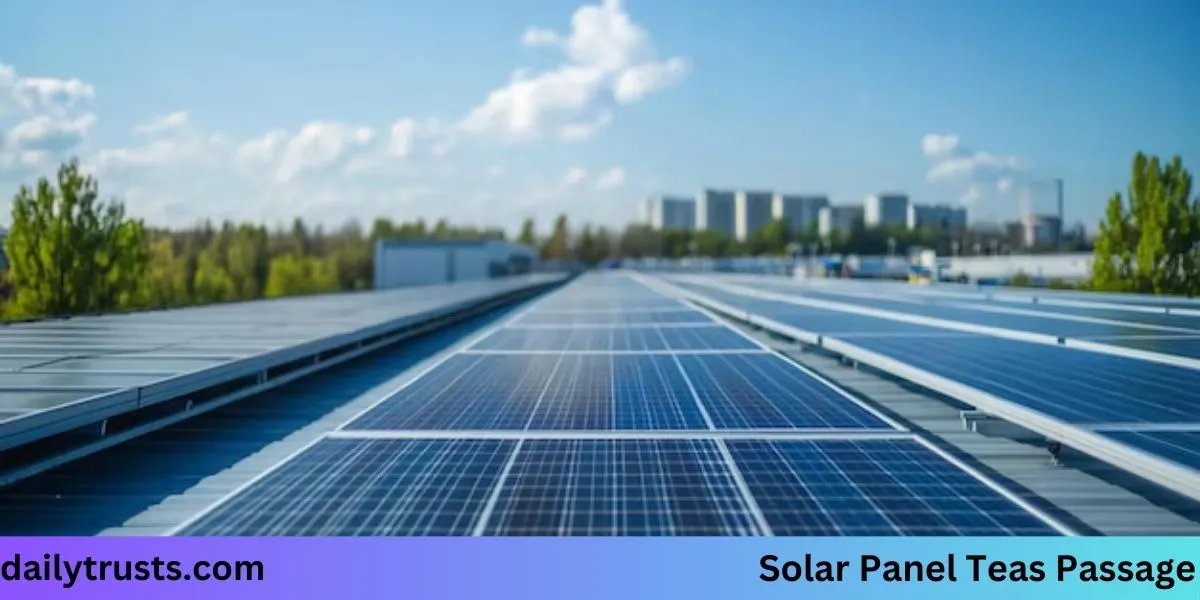What is Solar Panel Teas Passage?
Tea has a long history of cultivation and use, making it one of the most well-known drinks in the world. Solar Panel Teas Passage marks the beginning of a sustainable revolution in tea production, combining renewable energy with traditional brewing practices for a greener future. However, growing tea requires a lot of land, water, and energy, which may harm both the environment and the livelihoods of tea farmers. With the introduction of solar panel teas, some tea farmers have adopted a creative solution to these challenges.
Also Read:
Solar Power: Brewing Sustainability
Energy-intensive tasks including irrigation, processing, and shipping are common on tea plantations. This energy has historically come from non-renewable fossil fuels, which has resulted in greenhouse gas emissions and environmental degradation. On the other hand, utilizing solar panel teas passage offers a green and clean choice. Photovoltaic cells are used in solar panels to convert solar energy into electrical power. Power can be produced right where it is needed because to the thoughtful positioning of solar panels on the tea plantation path. This distributed method boosts energy efficiency and lowers transmission losses.
1. Solar Panel Used in Tea Plantation
Location, financial constraints, power needs, and environmental factors all affect solar panel transit. In fields like tea plantations, photovoltaic (PV) panels are often employed to convert sunlight into electricity.
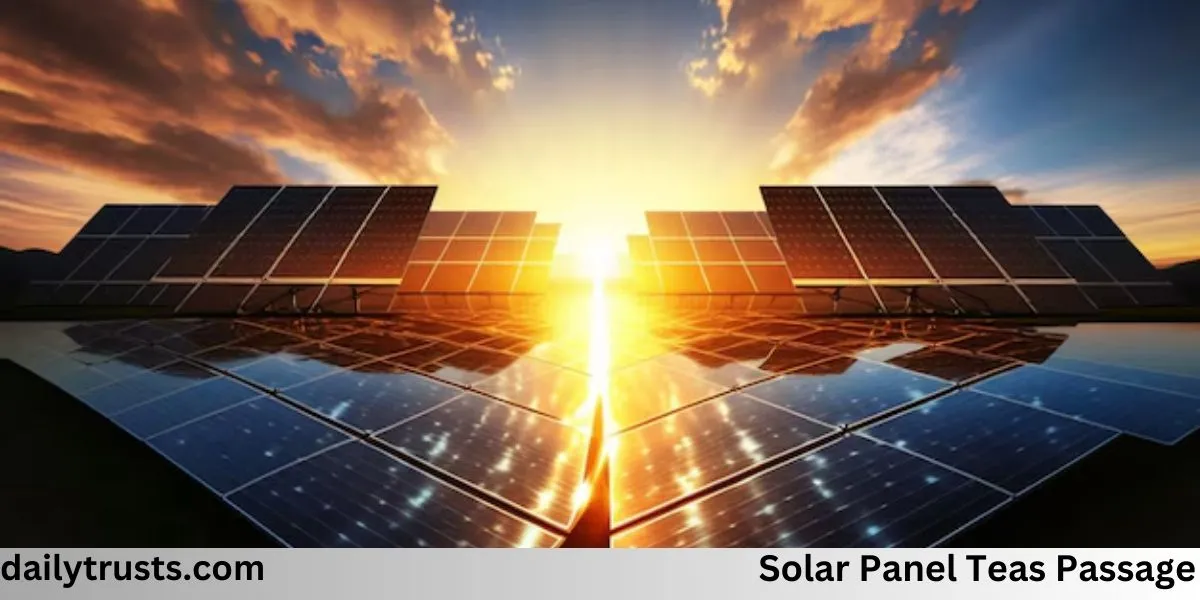
The following solar panel types are frequently found in tea plantations
- Monocrystalline solar panels: They effectively convert sunlight into electricity because they are made from a single crystal structure. Their endurance and strong power output make them perfect for tea plantations with space constraints or high-efficiency needs.
- Polycrystalline solar panels: These are less expensive to create than monocrystalline panels because they use many silicon crystals. Even though they might not be as effective as monocrystalline panels, tea plantations still frequently use them, especially in locations with lots of sunlight.
- Thin-film solar panels: Because they are flexible and lightweight, these are perfect for applications where more conventional stiff panels would not be feasible. They can be useful in some situations, such as on uneven terrain or in buildings with weight restrictions, even if they are not as effective as crystalline silicon panels.
Space availability, financial constraints, energy consumption, and site-specific factors will all influence the kind of solar panels utilized in tea plantations. Durability, upkeep needs, and warranty are all crucial factors to take into account when selecting solar panels for agricultural uses like tea plantations.
Benefits of the Solar Panel TEAS Passage
There are numerous benefits to using solar panels on tea fields along the TEAS Passage. It generates energy and improves work in agriculture. Everyone’s game is being changed by this astute play.
1. Renewable Energy Generation
Tea farms can use renewable energy by installing solar panels. This gives us more energy. Additionally, it lessens our reliance on fossil fuels, which benefits the environment.
2. Environmental Impact Reduction
By reducing our carbon footprint, solar panels promote environmental sustainability. The TEAS Passage demonstrates how a healthy earth and better air are achievable. The need for renewable energy is demonstrated by this battle against climate change.
3. Cost Savings and Economic Viability
Making the switch to solar panels is quite cost-effective. Costs decrease with government assistance and financing choices for solar panels. As a result, owners of tea plants will eventually receive a larger return on their investment in energy. It’s a wise business decision.
Importance of the TEAS Passage in Renewable Energy
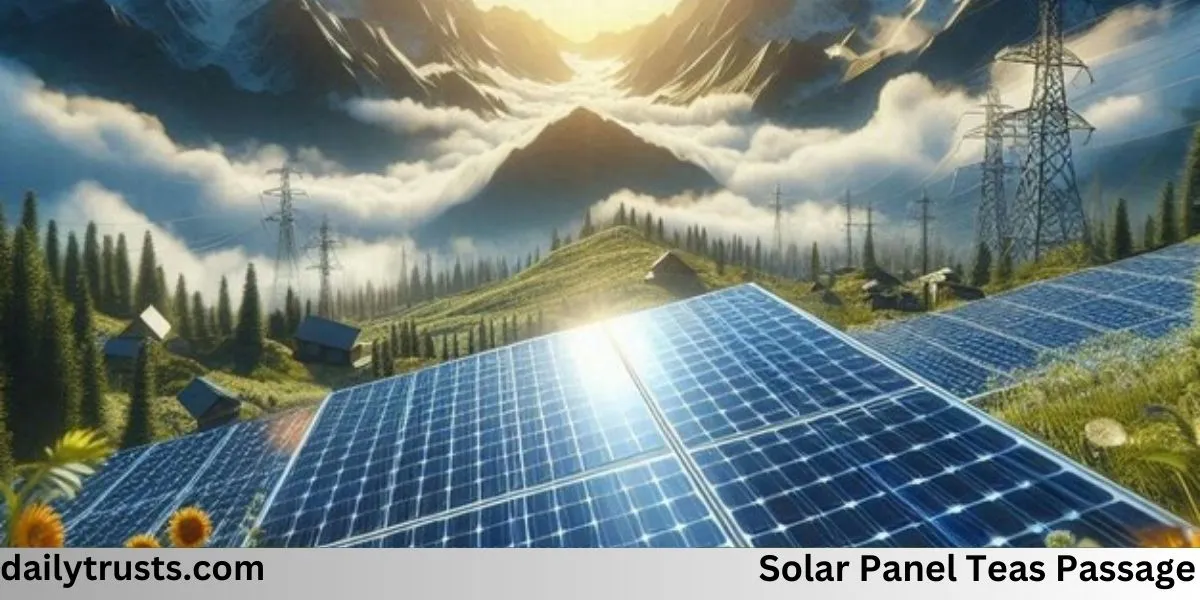
There are other uses for the TEAS Passage besides energy production. It reduces carbon emissions, which contributes to a greener agriculture sector. Combining solar energy with farming is beneficial for tea farms. It also aids in environmental preservation and meeting the world’s energy needs. This shows the need of renewable energy in modern farming.
How Solar Panels Work?
Numerous photovoltaic cells are found in solar panels. Sunlight is converted into electrical energy by these cells. Electricity flows through the cells when sunlight strikes them, creating an electric field. In this manner, solar panel efficiency is increased and sunshine becomes a reliable energy source for residences and businesses.
Solar Panel Efficiency: Key Factors
Understanding the factors influencing solar panel efficiency is crucial. We will examine two major factors: modern technology and sunshine.
1. Maximizing Sunlight Exposure
Solar panels need sunlight to function. Tea fields are ideal for solar panels since they receive a lot of sunlight. Energy is increased by proper placement, which is ideal for farming.
2. Technological Advances in Solar Panels
Solar panels are becoming better thanks to advancements in green energy technologies. Modern panels use less energy and are more efficient. Significant progress has been made, as a 260-watt panel now operates nearly at full capacity.
Innovative Applications in Agriculture
Solar panels have significantly changed farming in recent years. By utilizing the sun, they increase the efficiency and sustainability of farming.
1. Integrating Solar Panels into Tea Plantations
The solar panel A clever method of combining green energy with tea cultivation is TEAS Passage. There are two advantages to setting up solar panels among tea bushes. It makes farms greener and more self-sufficient by producing power and growing tea.
2. Land Optimization Strategies
Making the most of farms requires careful land use. Farmers can cultivate crops and generate energy on the same piece of land thanks to green solar panels.
3. Benefits of Integrating Solar Panels into Tea Plantations
Integrating solar panels into tea plantations offers a range of benefits, making it a highly efficient land-use strategy. By adding solar panels to tea plantations, energy self-sufficiency is significantly enhanced while simultaneously reducing the carbon footprint. This innovative approach combines renewable energy solutions with agriculture, resulting in improved land efficiency and increased economic viability. Utilizing dual-purpose land allows for the simultaneous production of tea and solar energy, maximizing the utility of the available area and contributing to sustainable development. These steps not only help tea plantations but also push us towards a greener future. We achieve this by using innovative energy solutions.
Renewable Energy Solutions for Residential Use
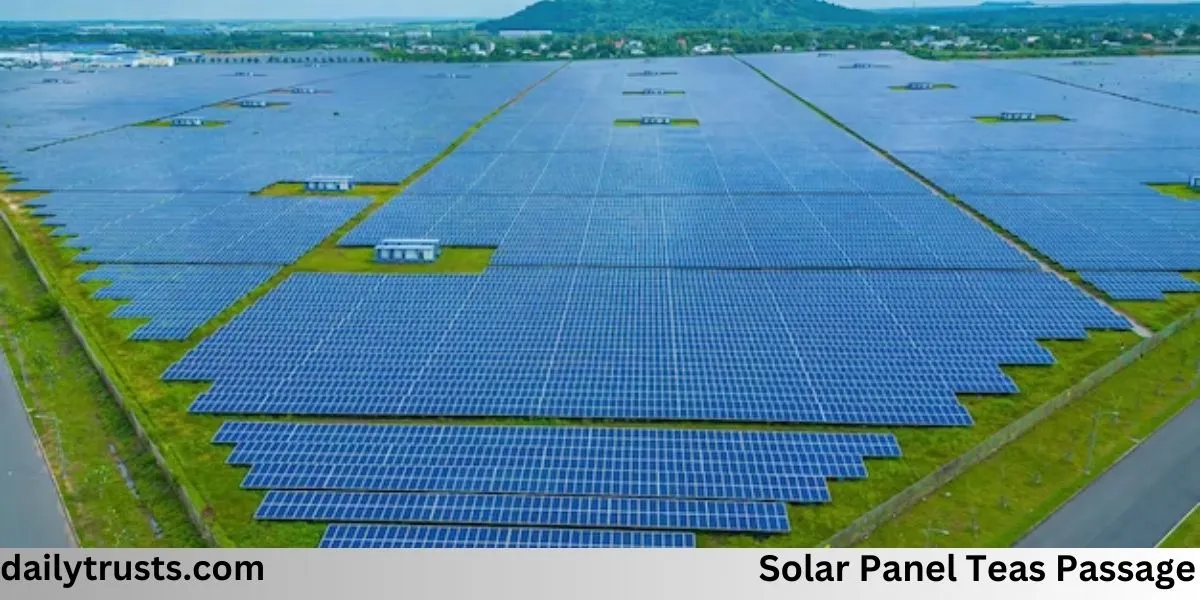
Eco-friendly energy solutions are increasingly being integrated into homes. This shift to sustainable living is spearheaded by residential solar panels.
1. Residential Solar Panels
With residential solar panels, homeowners can harness the sun’s clean energy. By installing these panels, the carbon footprint is lessened. This supports a move towards a green future, cutting down on fossil fuels.
2. Benefits of Home Solar Systems
Making the switch to solar electricity has several advantages for the environment and your pocketbook. The decrease in electric bills is a major factor in individuals switching. The rising expense of energy can be avoided by producing your own electricity. Additionally, because of government incentives and improved technology, the cost of installing solar panels has decreased.
3. Land Use Strategy and Its Benefits
Integrating solar panels into tea plantations is a forward-thinking approach to enhance energy self-sufficiency while significantly reducing the carbon footprint of these agricultural spaces. This innovative strategy combines renewable energy solutions with agriculture, leading to improved land efficiency and boosting the economic viability of tea production. By utilizing dual-purpose land, farmers can achieve simultaneous production of tea and solar energy, creating a sustainable and eco-friendly model that maximizes the utility of available resources.
This approach not only supports environmental conservation but also provides a long-term economic advantage to those in the agricultural sector. Going green is now simpler than ever for households thanks to the expanding solar energy market. Installing solar panels in your home is an investment in a sustainable and clean future.
Green Energy Technology and Its Future
Particularly with regard to solar panels, the field of green energy technology is evolving quickly. Exciting new advancements are being led by efforts to increase the efficiency of solar panels. The goal of these developments is to alter the way we use solar energy. New solar cells are being developed by manufacturers and researchers. These cells are less expensive and function better. This indicates that solar energy has become more efficient and less expensive.
1. Trends in Solar Panel Innovation
The developments in solar panels nowadays concentrate on a few key areas. Solar energy systems will be significantly enhanced by these developments. Progress in materials science is producing more efficient solar cells. Additionally, it’s critical to integrate smart grid technology with solar panels. Better energy storage and distribution are the goals of this movement in order to create a more stable and dependable power source.
2. Future Prospects and Developments
The efficiency of solar panels appears to have a bright future. Leading-edge technologies include perovskite solar cells and bifacial solar panels. They could increase productivity and reduce expenses. Plus, additional developments are on the horizon thanks to significant investments and continuous research. Our energy mix is expected to include a significant amount of solar energy. This action will benefit our economy and environment.
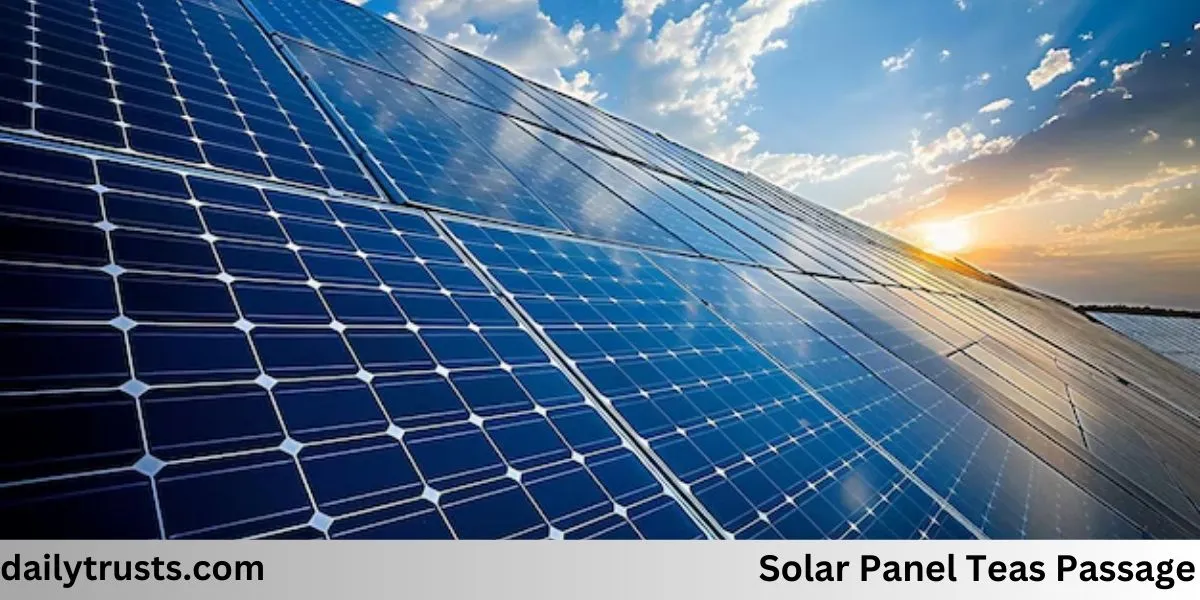
Applications of Solar Panel Teas Passage
- Residential Use: Homeowners can enjoy their morning tea with a sustainable twist by installing solar panel tea passage systems.
- Tea Cafés and Restaurants: As many tea shops adopt this technology, they attract eco-conscious patrons.
- Off-Grid Locations: Solar panel teas passage provides a dependable supply of hot water in isolated locations with little access to electricity.
- Camping and Outdoor Adventures: For outdoor enthusiasts, portable solar panel tea passage systems are ideal since they guarantee hot tea wherever they go.
Environmental Sustainability Through Solar Energy
One important factor in making our planet greener is solar energy. We reduce greenhouse gas emissions via solar panels. This combats climate change. A cleaner environment results from our reduced carbon footprint thanks to solar energy. We may be mindful of the planet and promote sustainable farming by installing solar panels in locations like tea fields.
1. Impact on Climate Change
Climate change is significantly mitigated by solar energy. Coal and other fossil fuels emit a lot of carbon dioxide. Solar energy, however, doesn’t. It’s a tidy decision. Reducing the use of fossil fuels helps combat global warming. Particularly in agriculture, solar panels benefit the environment.
2. Community Engagement and Job Creation
Additionally, solar energy benefits communities and creates jobs. It requires personnel for management, maintenance, and installation. This strengthens the economy and generates jobs. Solar panels improve farming and create more jobs in rural areas. Everyone benefits from switching to solar power, including our communities, economy, and planet.
Conclusion: Solar Panel Teas Passage
Our dedication to a sustainable future and human creativity is demonstrated by the solar panel teas passage. In addition to lowering our carbon impact, using the sun’s energy to brew our tea also results in significant financial savings. This cutting-edge technology can be used in a variety of settings, including residences, tea shops, and remote areas. We’re brewing a greener world with solar panel teas Well, not just tea. Are you ready to embrace solar panel teas and shape the future of tea brewing? Savor your favorite teas with a sustainable twist by joining the movement.
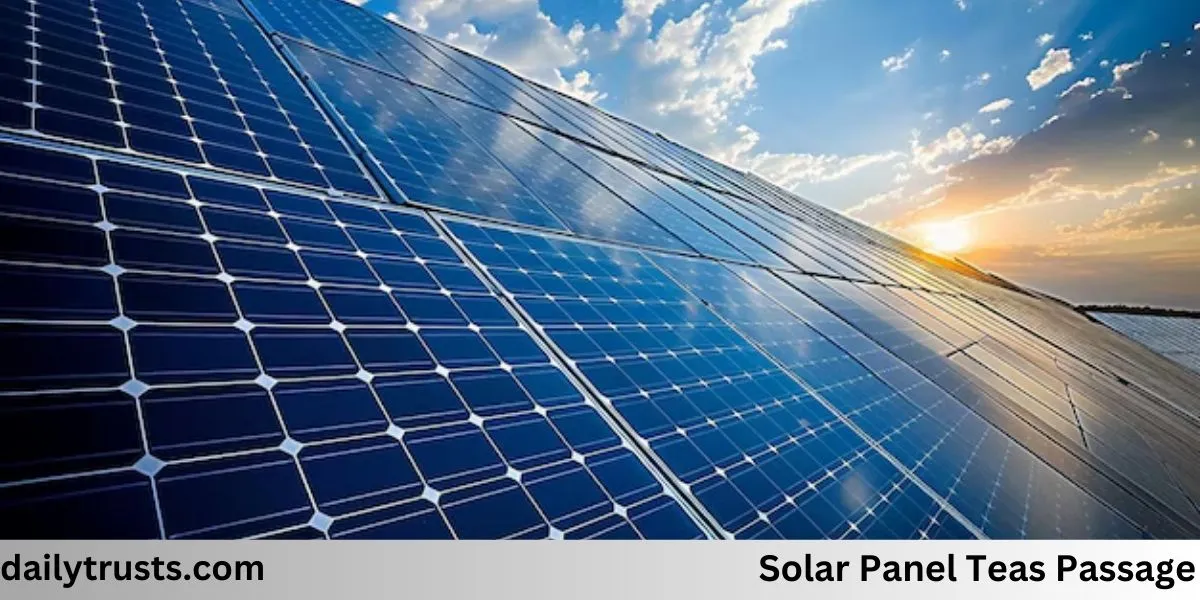
FAQs: Solar Panel Teas Passage
Here are some frequently asked questions about the Solar Panel Teas Passage. We’ve provided comprehensive answers to ensure you have all the information you need. If you still have any questions or require further clarification, our team of experts is here to assist you.
Don’t hesitate to contact us at any time—we’re always just a message away and ready to help!
1. How the solar system works?
Every planet in our solar system circles around the sun in the same way as it does on its axis. A planet’s year is the amount of time it takes for it to complete one full rotation around the sun. The planet’s orbit is the route it takes around the sun.
2. What is the basic concept of the solar system?
The solar system consists of the Sun and the celestial bodies that orbit it directly or indirectly, forming a gravitationally bound system. The Sun is the primary element in a solar system, as the name implies. Located at the center of the Solar System, the Sun is the largest star.
3. How did the solar system form step by step?
4.6 billion years ago, a cloud of gas and dust known as the solar nebula gave rise to the Sun and the planets. The collapse of the solar nebula was most likely caused by a shock wave from a nearby supernova explosion. The planets formed in a thin disk around the Sun, which formed in the center.
4. Can I use solar panel teas passage on cloudy days?
Even though solar panel teas passage works best in direct sunshine, it can still function on overcast days, albeit with a somewhat lower efficiency.
5. Is solar panel teas passage cost-effective in the long run?
Indeed, the installation of solar panels can eventually result in significant cost savings because of lower energy costs.
